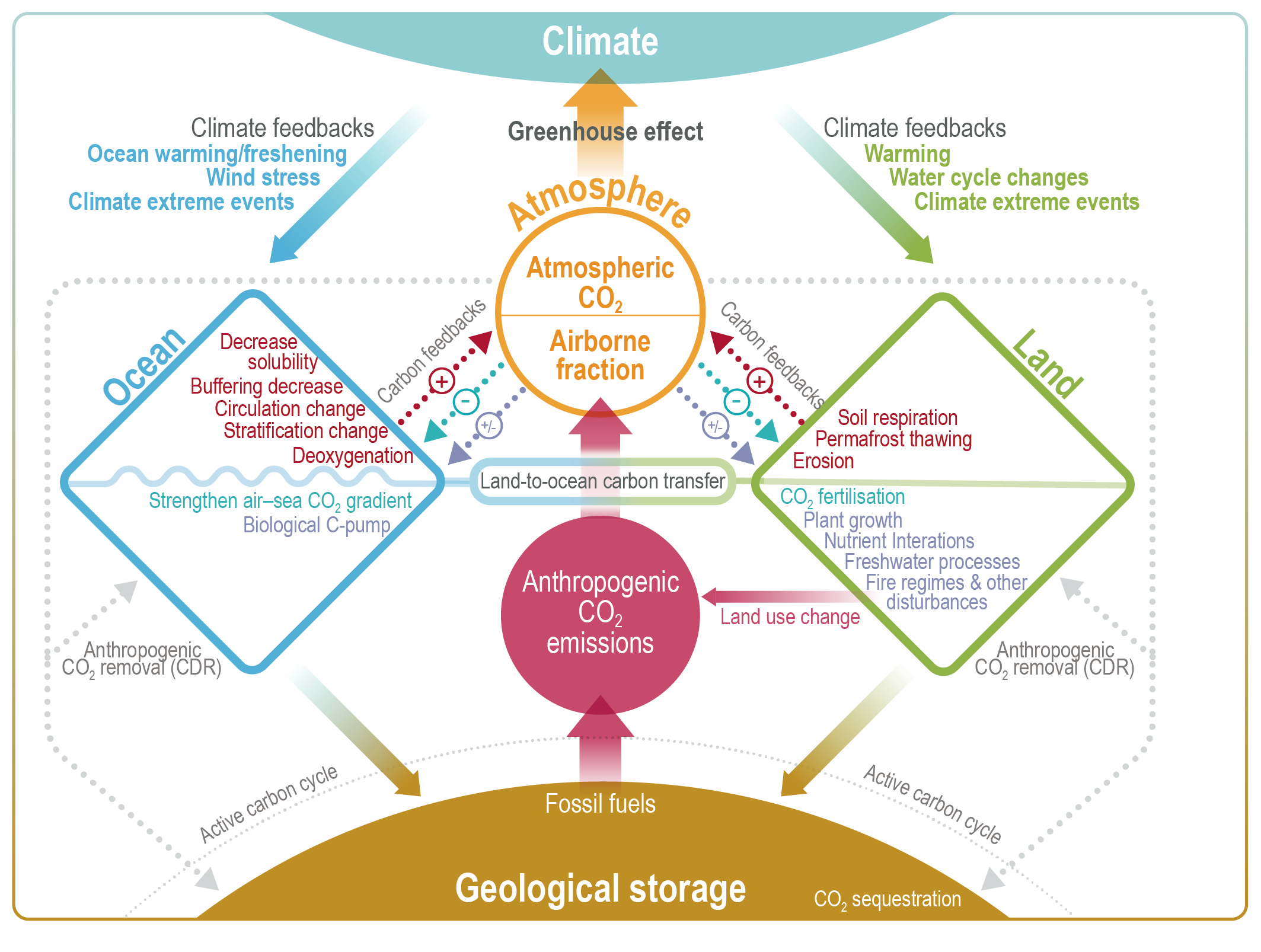Back chapter figures
Figure 5.2
Figure caption
Figure 5.2 | Key compartments, processes and pathways that govern historical and future CO2 concentrations and carbon–climate feedbacks through the coupled Earth system. The anthropogenic CO2 emissions, including land-use change, are partitioned via negative feedbacks (turquoise dotted arrows) between the ocean (23%), the land (31%) and the airborne fraction (46%) of anthropogenic CO2 that sets the changing CO2 concentration in the atmosphere (2010–2019; Table 5.1). This regulates most of the radiative forcing that creates the heat imbalance that drives the climate feedbacks to the ocean (blue) and land (green). Positive feedbacks (red arrows) result from processes in the ocean and on land (red text). Positive feedbacks are influenced by both carbon-concentration and carbon–climate feedbacks simultaneously. Additional biosphere processes have been included, but these have an as-yet-uncertain feedback impact (blue-dotted arrows). CO2 removal from the atmosphere into the ocean, land and geological reservoirs, necessary for negative emissions, has been included (grey arrows). Although this schematic is built around CO2 (the dominant greenhouse gas), some of the same processes also influence the fluxes of CH4 and N2O and the strength of the positive feedbacks from the terrestrial and ocean systems.
